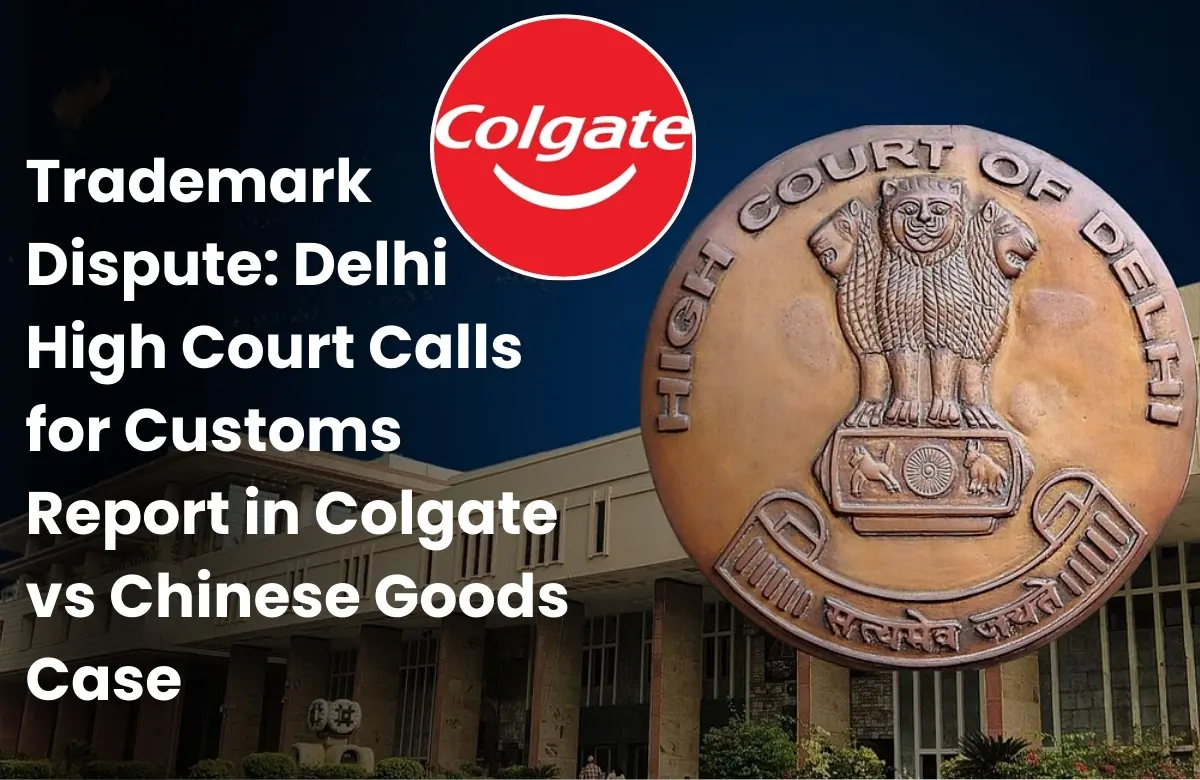
Another trademark case has recently made headlines in India, this time in the Delhi High Court, involving the global oral care giant Colgate-Palmolive. Delhi HC Colgate vs Doctor Good Trademark Case has directed customs authorities at Mundra Port, India’s largest private and commercial port located on the northern shore of the Gulf of Kutch, to inspect certain imported Chinese dental hygiene products. The objective is to know whether these products closely resemble Colgate’s packaging and branding, potentially infringing on its trademark. This case highlights how major companies actively protect their intellectual property rights (IPR) to safeguard brand identity and prevent unauthorized use. Keep reading to learn more about this landmark case.
Why Colgate Took Doctor Good to Court Over Similar Packaging
To understand this Trademark case better, we need to look at its background. The dispute began when Colgate-Palmolive noticed that some dental hygiene products being sold under the name “Doctor Good” had packaging very similar to Colgate’s own design. After further checks, it was revealed that these products were being imported from China.
Colgate’s packaging is globally known for its distinctive red background with bold white lettering, often combined with blue or green accents depending on the product type. Over time, this red-white-blue trade dress has become a symbol of Colgate’s brand identity and consumer trust in oral care. The Chinese products, however, carried packaging that looked similar to Colgate packaging.
- Colgate took action and filed a case against “Doctor Good”, arguing that its toothpaste and toothbrushes copied Colgate’s trade dress.
- The company said this could easily confuse customers, as both products belonged to the same category and were sold in the same markets.
- Colgate also highlighted its long-standing reputation and goodwill, which could be harmed by such imitation.
- Finally, it pointed out that the infringing products were already lying at Mundra Port, making the matter urgent and requiring immediate court intervention.
Read Also: Safed Parindey Trademark Battle: Gujarat HC Rules Against Sheri Affair Organizers
What Did the Delhi High Court Decide in the Colgate vs Doctor Good Trademark Case?
On September 17, 2025, the Delhi HC Colgate trademark case against the Chinese brand Doctor Good. The judge compared Colgate’s famous red, white, and blue packaging with the Chinese goods and found a clear similarity in look and feel. Since both companies sell toothpaste and toothbrushes in the same markets, the Court said there was a strong risk of consumer confusion.
- The Court recognized Colgate’s long-standing trust and goodwill, noting that copycat packaging could damage its reputation.
- Instead of granting an immediate injunction, the Court ordered Customs at Mundra Port to:
- Open two specific boxes in front of Colgate’s representatives.
- Keep the goods in a bonded warehouse.
- Submit a detailed report with photos, descriptions, and origin details within two weeks.
- The next hearing was fixed for October 29, 2025.
What Is the IPR Perspective on the Colgate vs Doctor Good Trademark Case?
From an intellectual property (IPR) perspective, the Colgate vs Doctor Good case shows how important it is to protect not just a brand name but also its packaging and trade dress. Colgate’s argument is based on the idea that customers often identify a product by its look and feel, and copying that can amount to trademark infringement or passing off. Delhi HC Colgate trademark case cautious approach—ordering Customs to inspect the goods before granting an injunction—also highlights how IPR enforcement works in cross-border cases. It reflects the balance courts must maintain: protecting a company’s goodwill and brand identity while ensuring that claims of infringement are backed by clear evidence.
Conclusion
Delhi HC Colgate trademark case chose to move carefully in the Colgate vs Doctor Good case. While it acknowledged the strong similarity in packaging and the risk of customer confusion, the Court ordered a Customs inspection before making a final call. The outcome now rests on the report due before the next hearing on October 29, 2025.
Read Also: AYUSH Patent Guidelines: Protecting India’s Traditional Knowledge Through Innovation
